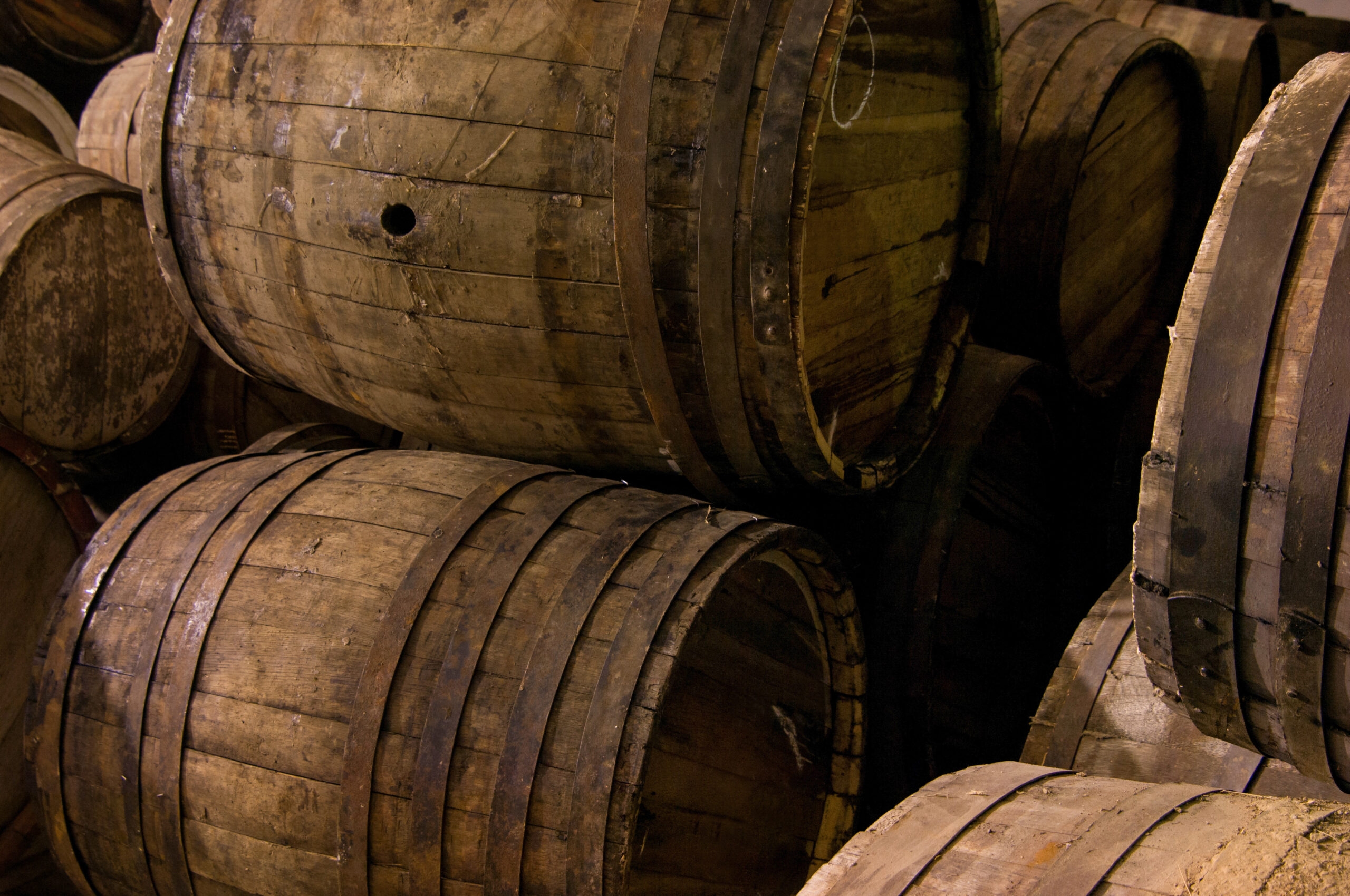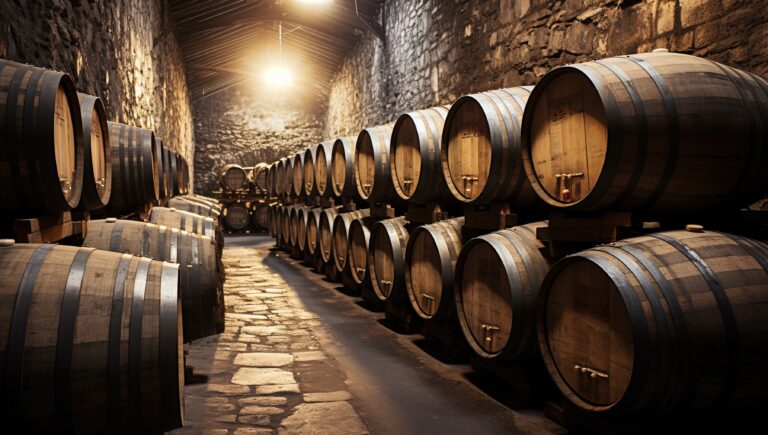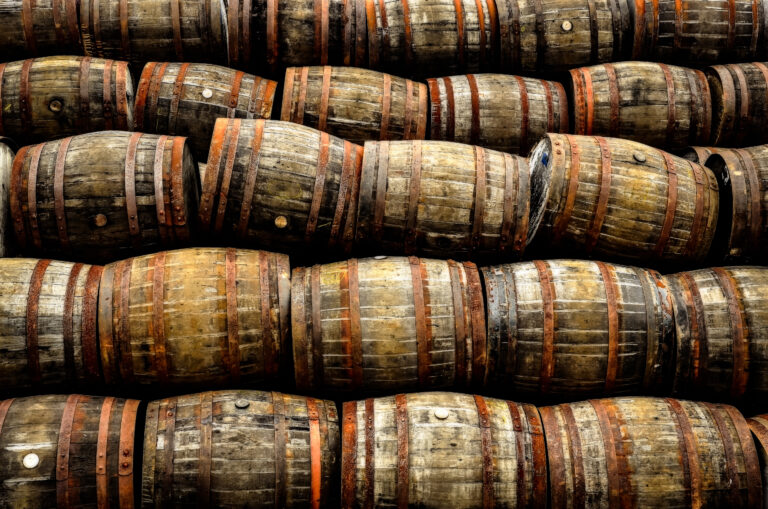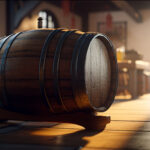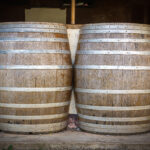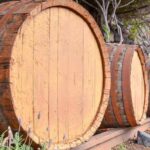You might think barrel making is a relic of the past, something you’d only stumble upon in a dusty museum or a swashbuckling pirate flick. But hold onto your hats, because this ancient craft is experiencing a vibrant resurgence. Artisanal distillers and brewers, driven by a passion for authentic flavors, are rediscovering the magic of time-honored barrel making techniques. They’re not just throwing booze into any old oak barrel; they’re meticulously selecting woods like chestnut, cherry, and even acacia, each imparting unique nuances to their creations. Some are even going as far as to repurpose barrels that once cradled fine wines, sherries, or ports, layering flavors in a way that’s nothing short of culinary alchemy. The barrel itself has become a canvas for artistry, with coopers handcrafting each piece, toasting and charring the interiors to precise specifications, coaxing out specific aromas and tastes. Turns out, those old-timey barrel makers weren’t just building containers; they were crafting flavor, one stave at a time.
Introduction to Barrel Making History: A Legacy Etched in Wood
Barrel making, or cooperage, isn’t just a trade; it’s a living testament to human ingenuity. Its roots stretch back millennia, all the way to the Celts in 500 B.C. Coopers, the skilled artisans who fashion barrels, were indispensable members of early societies, providing the only reliable means of storing and transporting goods. Before the advent of modern materials, wooden barrels were the backbone of commerce, carrying everything from wine and oil to salted fish and gunpowder.
The Barrel Making Process: A Symphony of Skill and Nature
The cooperage process begins with the careful selection of high-quality wood, typically oak, renowned for its strength, durability, and ability to impart desirable flavors. Each stave, the narrow strip of wood that forms the barrel’s body, is meticulously shaped with a hatchet, its edges beveled to ensure a tight fit. These staves are then subjected to heat and moisture, allowing them to be bent into the characteristic curved shape. Once formed, the staves are assembled, secured with wooden or metal hoops, and the barrel heads are fitted into place. But the magic doesn’t stop there. Coopers employ a range of time-honored techniques, such as wood chipping and charring the inside of the barrels, to influence the flavor of their contents. These processes unlock the wood’s natural compounds, imparting distinct notes to aged spirits like whiskey, brandy, and wine. The size of the barrel, the type of wood used, and the level of charring all play a crucial role in shaping the final aroma and taste.
A Resurgence in Demand: The Call of Authenticity
While barrel making once faced the threat of obsolescence, it’s now experiencing a remarkable renaissance. This revival is fueled by a growing appreciation for traditionally made and finished goods. In an age of mass production, consumers are increasingly drawn to products that embody craftsmanship, history, and a tangible connection to the past. Barrels, with their inherent sense of history and handcrafted quality, have become highly sought after by brewers and distillers who prioritize authenticity. Many are now opting for barrels over stainless steel for aging and fermenting, recognizing the unique flavors that only wood can impart. The ancient craft of barrel making endures because wooden barrels produce inimitable results. While modern technology has enabled industrial-scale production, traditional barrel making techniques are still valued for their ability to create exceptional products. Barrels remain an integral part of the production process for premium wineries, breweries, and distilleries seeking the distinctive flavors that only wood aging provides. The cooper’s time-honored craft lives on, a testament to the enduring power of tradition.
Traditional Barrel Making Methods and Materials: The Art of Cooperage
Traditional barrel making is more than just a trade; it’s an art form that’s experiencing a well-deserved resurgence. Craft distillers and brewers, seeking to elevate their products, are turning back to the old ways, embracing historic materials and methods to produce premium spirits and beers. Wood selection is paramount in this endeavor. Oak, with its unique properties and flavor-imparting qualities, has long been the wood of choice for barrel makers. White oak, particularly French and American varieties, is highly prized for its porousness and ability to contribute desirable flavor compounds. The wood undergoes a meticulous curing process, often lasting several years, before it’s deemed suitable for barrel making. Shaping the staves and raising the barrel is a delicate dance between man and machine. The staves are individually shaped, then raised and held in place with metal hoops as the barrel takes form. The barrel is then toasted or charred to the customer’s precise specifications, a process that plays a crucial role in shaping the final flavor profile.
Assembly and Sealing: The Pursuit of Perfection
The staves are meticulously assembled into the barrel’s iconic shape, held together by metal hoops. Ensuring a watertight seal is paramount, so coopers employ a flagon to test for any leaks before the barrel is sent to its destination. Hammering the hoops and adding additional staves helps achieve the perfect seal. Barrel making is a harmonious blend of artistry and functionality. While modern technology has mechanized some steps, the finest barrels are still crafted by hand, using techniques that have been passed down through generations. For distillers and brewers seeking premium, full-flavored spirits and beers, there’s simply no substitute for a well-made barrel. The revival of traditional coopering is a welcome blast from the past, a testament to the enduring value of craftsmanship.
The Decline of Barrel Making Over Time: A Shift in the Tides
Barrel making was once a thriving industry, but over time, these historical techniques began to decline for a variety of reasons.
- Cost and Convenience: As manufacturing became more efficient, barrels were replaced by cheaper alternatives like bottles, cans, and cardboard containers. These modern options were also more convenient for producers and consumers to use and transport.
- New Materials: The rise of new materials led to barrel obsolescence. Products that were once stored or aged in wood barrels could now be produced in stainless steel vats. Plastic and glass also provided non-porous and inert storage solutions. These materials were viewed as more hygienic and consistent for product quality.
- Changes in Aging Techniques: Some alcoholic beverages like wine, spirits, and beer were traditionally aged in barrels, allowing the wood to impart flavor and aroma compounds. However, new aging techniques emerged using small oak chips or staves added directly to stainless steel vats. These new methods aimed to accelerate the aging process and provide more consistent results.
- Shifts in Consumer Tastes: As societies industrialized, consumer tastes shifted towards lighter, fresher styles. The bold, robust flavors that came from barrel aging were less in vogue. Many producers moved away from barrel aging to meet changing consumer preferences.
Tradition Preserved: A Flame That Endures
Despite these declines, barrel making and use have endured in some areas. Artisanal producers aiming to achieve more traditional results have kept the practice alive. Certain alcoholic beverages also remain closely tied to barrel aging for authenticity, like bourbon, scotch, and tequila. And barrels themselves have become nostalgic, with craft brewers and distillers using them to impart a sense of heritage and tradition. So while barrel making has largely become a relic of the past, its time-honored techniques and the classic products that result continue to be cherished by those seeking to preserve tradition.
Why Barrel Making Is Making a Comeback: A Return to Roots
Barrel making, also known as cooperage, was once a thriving industry. Wooden barrels were essential for transporting and storing everything from wine and whiskey to fish and nails. With the rise of stainless steel, plastic and cardboard containers, barrel making declined. However, in recent years, barrel making has seen a revival. Artisanal industries like craft brewing, small-batch distilling, and natural winemaking have fueled a resurgence in traditional barrel aging techniques. Wooden barrels impart flavor and aroma compounds to the liquids aged in them. The wood interacts with the liquid, mellowing harsh flavors and adding distinctive notes like vanilla, spice and toast. Barrel makers today use time-honored techniques combined with modern tools to produce barrels tailored to customers’ needs. Barrels come in a range of woods like oak, chestnut and acacia, and are made of staves bound by metal hoops. Coopers carefully select and season the wood, then raise and shape the staves using heat and steam. They craft barrels of various sizes, from small 5-gallon casks to massive vats holding thousands of liters. The revival of barrel making is a win for craft producers and consumers alike. Barrel aged beverages are highly prized for their complex flavors. And cooperage provides skilled jobs that preserve history and support local communities. Barrel making may be an old craft, but it continues to play an important role in today’s artisanal food and drink culture. For producers seeking to create truly distinctive tastes and aromas, there’s simply no substitute for the real wooden barrel. The time-tested techniques of coopers everywhere yield results that stainless steel simply can’t match. Barrel making is here to stay.
Modern Applications of Historical Barrel Making: Innovation from Tradition
Barrel making techniques from centuries past are making a comeback today in innovative ways. Cooperages that have been producing barrels for hundreds of years are finding new applications for their craft.
- Wine and Spirits: Historically, barrels were essential for storing and aging wines and spirits. Today, in addition to traditional oak barrels, coopers are creating barrels from chestnut, acacia, and redwood. These alternative woods impart different flavors and aromas to the wines and spirits. Some distilleries are even aging their spirits in multiple barrels made of different woods to create complex flavors.
- Barrel-Aged Foods and Beverages: Cheese, fish sauce, maple syrup, and soy sauce are just a few of the foods being aged in barrels today. The porous wood barrels allow subtle flavor and aroma compounds to penetrate into the food. Breweries have also started aging certain craft beers in barrels to infuse them with notes of oak, bourbon or wine.
- Furniture and Decor: Barrel staves, the narrow strips of wood that make up the sides of barrels, are being used to create furniture, flooring, and decor. The curved shape of staves lends itself well to chairs, tables, and bar tops. Craftsmen arrange the staves in creative patterns to make unique pieces. Barrel hoops and metal hardware are also incorporated into furnishings for an industrial look.
- Planters and Storage: Don’t throw out those old barrels just yet. They make perfect planters, storage containers, and organizers. Fill a barrel with potting soil and colorful blooms to create a stunning flower planter. Use a barrel to store tools, towels, or other equipment in a garage or garden shed. Smaller barrels are ideal for corralling items on a desk or tabletop. With some weatherproofing, barrels can even be used as rain barrels to collect water.
Barrel making is an ancient craft that continues to find new life in the 21st century. Whether for storing and aging products, creating furnishings, or repurposing as planters and storage, barrels have stood the test of time. Blending modern tastes with historical tradition, today’s coopers are ensuring barrel making techniques from the past will endure long into the future.
Benefits of Using Traditional Barrel Making Techniques: The Essence of Quality
Traditional barrel making techniques have been used for centuries to produce high quality barrels for aging and storing wine, spirits, and beer. Returning to these historical methods provides several benefits over modern barrel production.
- Better Maturation: Barrels made using traditional techniques, where staves are heated and bent into shape, create a tighter seal, allowing for better control over oxidation and evaporation. This results in more complex flavors developing during maturation. The natural tannins and lactones in the wood are released slowly, gently interacting with the liquid.
- Superior Aroma and Flavor: The barrels produced using historical methods, where wood is coopered by hand, have a more open grain structure. This allows for better penetration of aromas and flavors into the wood. The liquid is exposed to more surface area, extracting desirable compounds from the wood. The end result is a richer, fuller flavor profile.
- Higher Quality Wood: Traditional coopers are able to hand select wood staves based on the tightness of grain, aroma, and other characteristics. They can choose staves from the center of the log, which typically have superior qualities for barrel making. The wood used is often aged for longer, further enhancing its flavoring potential before being made into barrels.
- Craftsmanship: There is an art to traditional barrel making that produces a level of quality unable to be matched by modern mass production. Skilled coopers who have apprenticed for years are intimately familiar with how different types of wood and grains will impact the end product. Their expertise and care put into each barrel results in a superior product.
A return to time-honored barrel making techniques comes with substantial benefits to the quality and flavor of aged goods. For discerning consumers and producers, traditional barrels are worth the investment. By valuing craftsmanship and natural materials, history can sometimes provide the best innovations.
Challenges of Reviving Historical Barrel Making: Navigating the Past
Reviving historical barrel making techniques comes with its fair share of challenges. Many of the skills and craftsmanship have been lost over time and need to be relearned.
- Finding craftsmen: Finding craftsmen with the knowledge and skills to make barrels using traditional methods is difficult. Barrel making was once a common trade, but as technology and materials have changed, the demand for coopers has declined. The few remaining coopers are aging, and younger generations have not learned the craft.
- Acquiring high-quality wood: Acquiring high-quality wood that has been properly aged and seasoned is challenging. The wood used, like American white oak, needs years of drying and conditioning to be suitable for barrel making. Sources for wood that has undergone this long process are limited.
- Specialized tools and equipment: The hand tools, equipment, and workspaces required for historical barrel making are specialized and hard to come by. Everything from the wood staves, metal hoops, and hand tools needs to be crafted specifically for barrel making using traditional techniques. This requires investment in space, equipment, materials, and time.
- Time and labor: The time and labor required to make barrels using historical methods is extensive. Each barrel can take days to craft by hand, from raising the staves and trussing the barrel to charring and finishing. This level of time and skill significantly impacts the cost and availability.
- Safety standards and regulations: Safety standards and regulations may need to be addressed. Historical barrel making equipment and techniques were developed before many modern safety practices. Modifications and adaptations may be needed to comply with regulations.
Reviving and preserving historical barrel making is challenging but worthwhile to understand and honor the craftsmanship of the past. With time and effort, these challenges can be overcome, and the tradition can be kept alive for future generations. By valuing the coopers, wood, tools, and time required, high-quality barrels can once again be produced using time-honored techniques.
Notable Modern Barrel Makers Using Traditional Methods: Keepers of the Flame
Some craft distillers and brewers are returning to historical barrel making techniques for aging their spirits and beers. Using traditional methods harkens back to a time when barrel making was an art form and helps create unique flavor profiles.
- Kentucky’s Blue Run Spirits: Blue Run Spirits in Kentucky is using historical methods to craft their bourbon barrels. They source oak from the Ozarks, air dry the wood for up to two years, and cooper the barrels by hand. Blue Run believes these traditional techniques help create barrels with more character that impart distinctive flavors to their bourbon.
- Scotland’s Arbikie Distillery: At Arbikie Distillery in Scotland, master coopers use tools and techniques that have been passed down through generations. They source oak from sustainable French forests, hand split the wood into staves, and cooper the barrels using steel hoops instead of wire. Arbikie believes coopering in this historical fashion produces barrels that give their Scotch whisky a unique taste of the local terroir.
- Oregon’s Logsdon Farmhouse Ales: Brewer Dave Logsdon started making barrels so he could barrel age beers to his own specifications. He sources oak from the Pacific Northwest, has the wood air dried for over a year, and handcrafts each barrel. Logsdon believes these barrels crafted using traditional techniques allow more subtle flavors from the wood to come through, enhancing the regional character of his farmhouse ales.
While technology has enabled faster, more efficient barrel production, some craft makers are finding value in historical barrel making methods. Using locally-sourced wood, longer air drying times, and hand coopering, these notable producers are creating barrels with more complex flavors that influence the regional character of the spirits and beers aged within. Returning to the roots of barrel making is allowing them to produce truly distinctive craft products.
The Future of Historical Barrel Making Techniques: A Legacy in Progress
The future of historical barrel making techniques looks promising. As people continue to value craftsmanship and traditional production methods, interest in barrels made using time-honored techniques will likely grow.
- Cooperages Specializing in Traditional Methods: Some cooperages now specialize in historically-accurate barrel making. Using tools and techniques that have been passed down through generations of coopers, they are keeping traditional barrel making alive. These craftsmen see barrel making as an art form, and they aim to make barrels that allow the flavors of the wood and toast to shine through.
- Growing Demand for Authenticity: Consumers today often prefer products with an authentic story and history. Barrels made using traditional techniques provide that authenticity. The barrels themselves become part of the story of the wine or spirit. The demand for handcrafted, artisanal products will help ensure historic barrel making techniques are preserved.
- Revival of Other Traditional Crafts: The revival of historic barrel making is part of a larger renewed interested in traditional crafts. Everything from craft brewing to bread baking to pottery making is experiencing a resurgence. As people seek to reconnect with history and support local craftsmen, traditional crafts are gaining popularity. The return of coopering is a natural part of this movement.
- Combining Technology and Tradition: While traditional tools and techniques are essential to historic barrel making, technology also has a role to play. Some cooperages are experimenting with ways to combine modern technology with traditional craftsmanship. For example, they may use computer-controlled kilns to precisely control the toast of the barrels. Or they may use laser cutting for some parts of the barrel. Blending modern technology and historic techniques may help make the barrel making process more efficient and consistent while still honoring tradition.
The future of historic barrel making looks bright. A desire for authentic, handcrafted products and a revival of interest in traditional crafts have created an environment where time-honored coopering techniques can thrive. As cooperages blend modern technology and traditional craftsmanship, historic barrel making will evolve while staying true to its roots. Historic barrel making has a long history, but it also has a long future ahead of it.
Final Thoughts: A Toast to Tradition
So there you have it, a deep dive into how barrel makers are reviving historical techniques to produce higher quality barrels that impart more complex flavors to wines and spirits. By going old school, these craftsmen are creating products with more character and nuance. Next time you enjoy a glass of wine or bourbon, take a moment to appreciate the skill and artistry that went into crafting the barrels they aged in. While technology and mass production have their place, sometimes you just can’t beat the human touch and time-honored traditional methods. The revival of historical barrel making is a welcome blast from the past that allows us to connect with the roots of an ancient craft.
